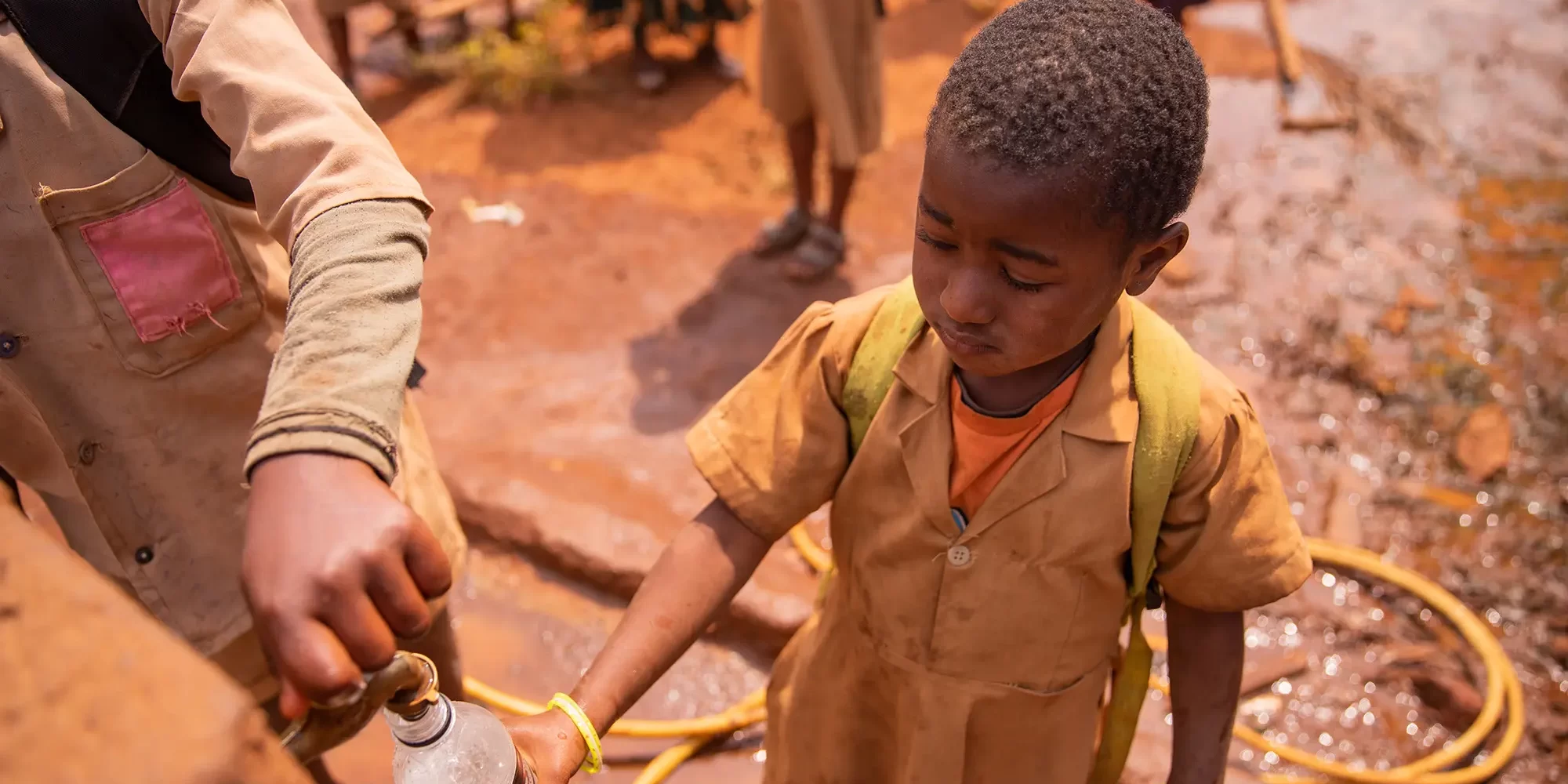Access to safe drinking water is a critical priority in emergency situations, whether caused by natural disasters, infrastructure failures, or humanitarian crises.
Contaminated water sources can lead to the rapid spread of waterborne diseases, further endangering already vulnerable populations.
Chlorine Dioxide (ClO₂) has emerged as an essential solution for emergency water treatment, providing rapid, effective disinfection while being safe, easy to deploy, and highly efficient across a wide range of contaminants.
Why Safe Water is Critical in Emergencies
 When disaster strikes, local water infrastructure can become compromised due to flooding, power outages, or contamination. In such scenarios, affected communities may be forced to rely on untreated water sources, increasing the risk of serious illnesses caused by bacteria, viruses, and parasites. Common waterborne diseases such as cholera, dysentery, and typhoid can spread rapidly in these conditions, making immediate water treatment a top priority for emergency responders.
When disaster strikes, local water infrastructure can become compromised due to flooding, power outages, or contamination. In such scenarios, affected communities may be forced to rely on untreated water sources, increasing the risk of serious illnesses caused by bacteria, viruses, and parasites. Common waterborne diseases such as cholera, dysentery, and typhoid can spread rapidly in these conditions, making immediate water treatment a top priority for emergency responders.
The Advantages of Chlorine Dioxide in Disaster Response
Chlorine Dioxide is a preferred choice for emergency water treatment due to its effectiveness, safety, and ease of deployment. Unlike traditional chlorine-based disinfectants, ClO₂ offers several distinct advantages:
- Fast-Acting and Powerful Disinfection
Chlorine Dioxide rapidly eliminates bacteria, viruses, and parasites, including E. coli, Salmonella, Cryptosporidium, and Giardia. This ensures that even highly contaminated water can be rendered safe for consumption within minutes. - Effective Across a Wide pH Range
Unlike chlorine, which loses effectiveness in alkaline conditions, Chlorine Dioxide remains active in water with a pH range of 4 to 10, making it reliable in diverse environmental conditions. - No Harmful By-Products
Traditional chlorine can react with organic matter in water to produce harmful disinfection by-products (DBPs) such as trihalomethanes (THMs) and haloacetic acids (HAAs). Chlorine Dioxide, on the other hand, does not form these dangerous compounds, ensuring safer drinking water. - Portable and Easy to Use
ClO₂ can be deployed in tablet, liquid, or generator form, making it highly adaptable for emergency response teams and field operations. Tablets, in particular, offer a lightweight and easy-to-use solution for immediate water treatment. - Long-Lasting Residual Protection
Unlike chlorine, which dissipates quickly, Chlorine Dioxide provides a residual effect that helps prevent recontamination of stored water over time. This is particularly useful in emergency settings where ongoing water safety is essential.
Applications of Chlorine Dioxide in Disaster Relief
Chlorine Dioxide is used by relief organisations, NGOs, and government agencies worldwide for emergency water treatment in a variety of scenarios:
- Natural Disasters (Floods, Hurricanes, Earthquakes)
When water supplies are disrupted or contaminated, ClO₂ can be used to rapidly treat drinking water for affected populations. - Humanitarian Crises and Refugee Camps
Large-scale displacement often results in poor sanitation and water contamination. Chlorine Dioxide ensures clean, safe drinking water for displaced communities. - Remote and Off-Grid Emergency Situations
In areas where infrastructure is non-existent or severely damaged, ClO₂ tablets provide an efficient, self-sufficient solution for water purification. - Military and First Responder Use
Armed forces, emergency teams, and disaster response units rely on portable ClO₂ solutions to ensure safe drinking water in field operations.
Chlorine Dioxide is a game-changer in emergency water treatment, offering a fast, effective, and portable solution for disaster relief efforts. Its ability to disinfect a broad spectrum of contaminants without producing harmful by-products makes it a superior choice for ensuring safe drinking water when it matters most. For more information on how Scotmas can support emergency water treatment needs, contact us today.






